Full text
PDF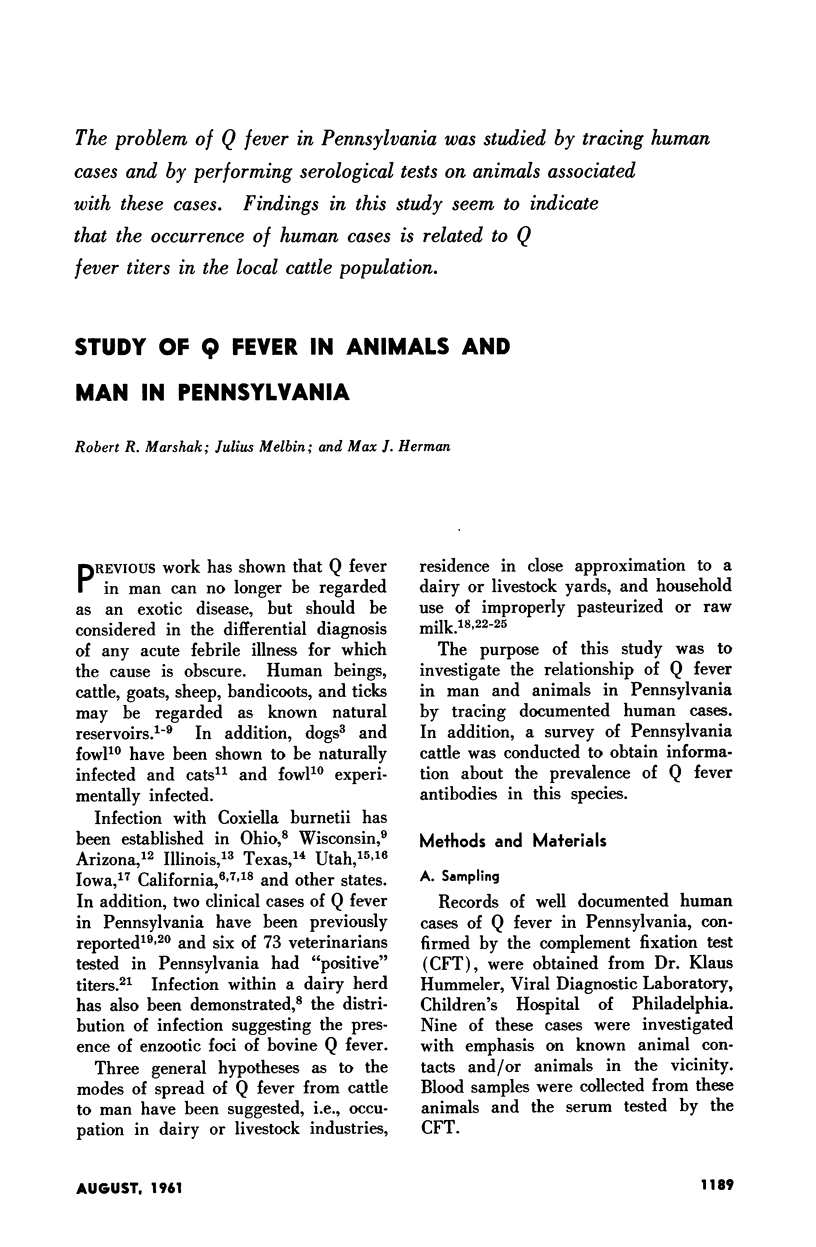

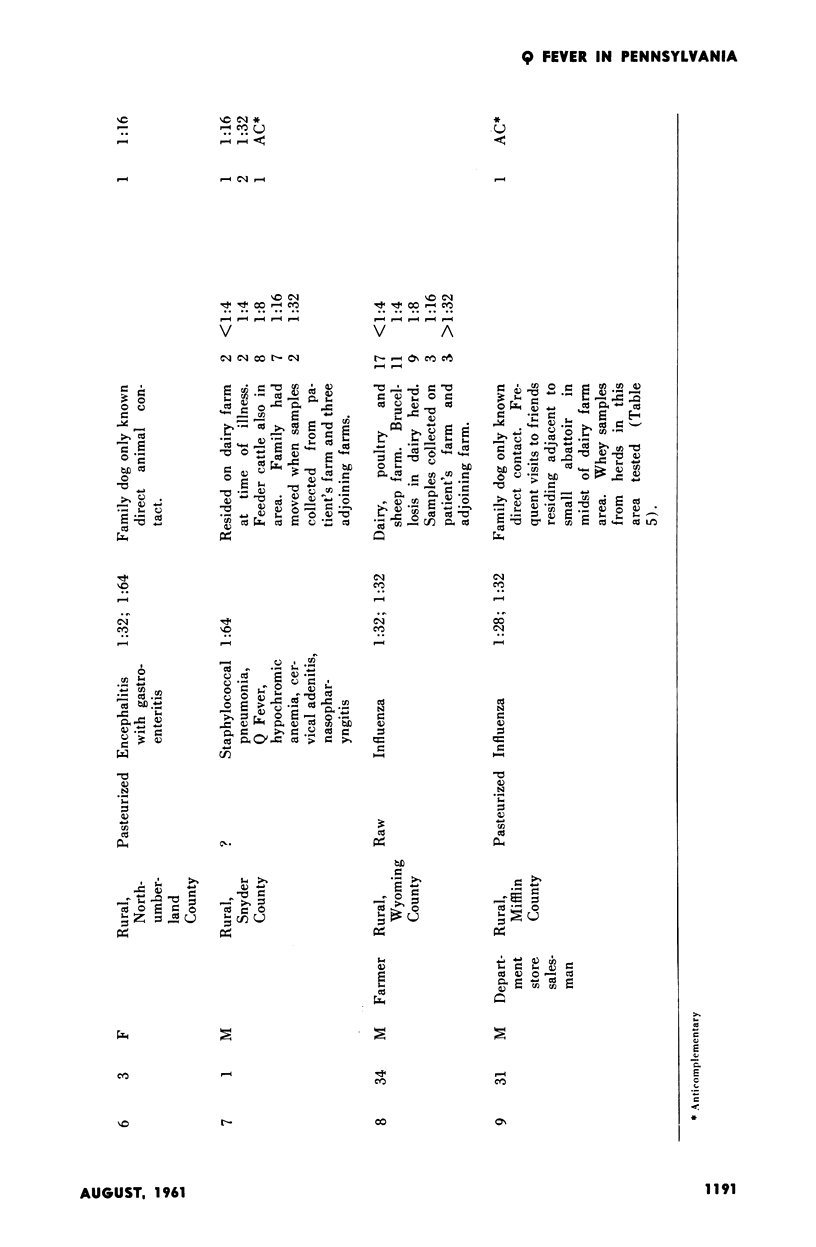
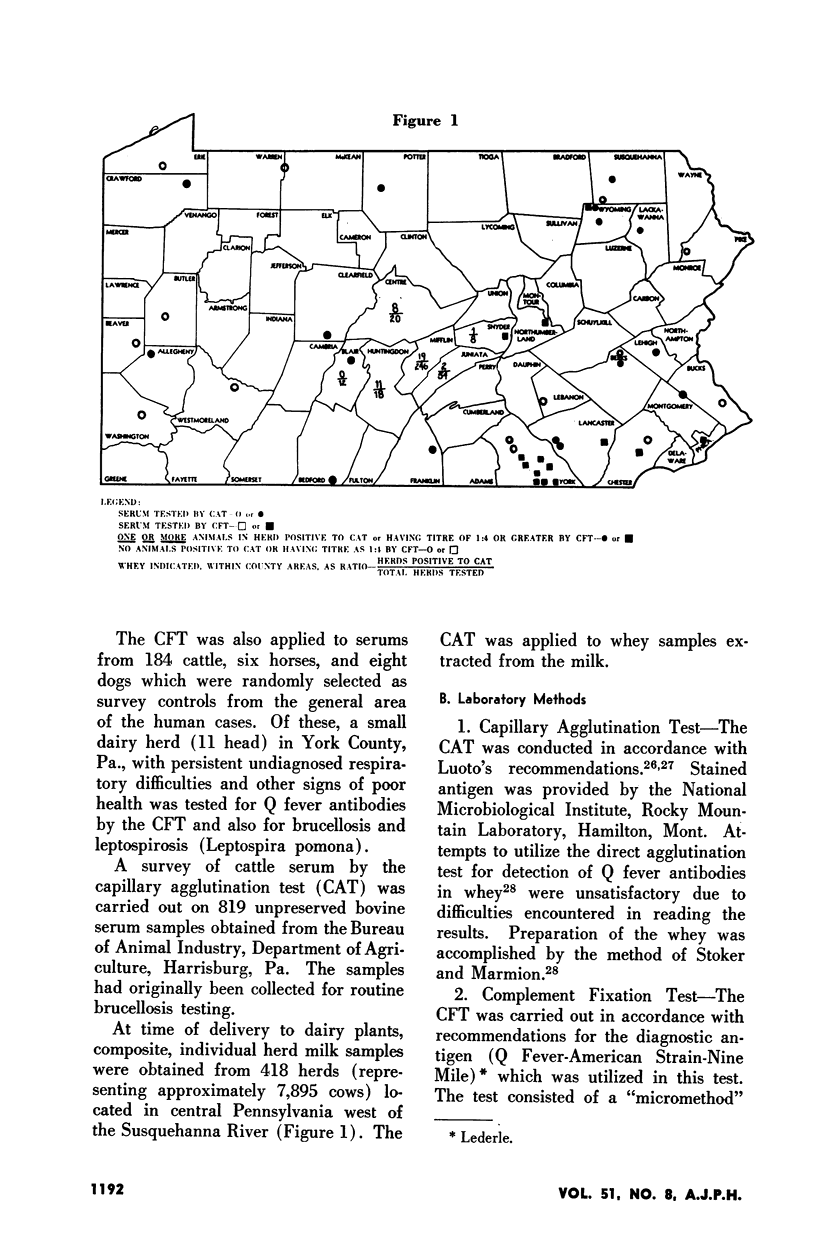
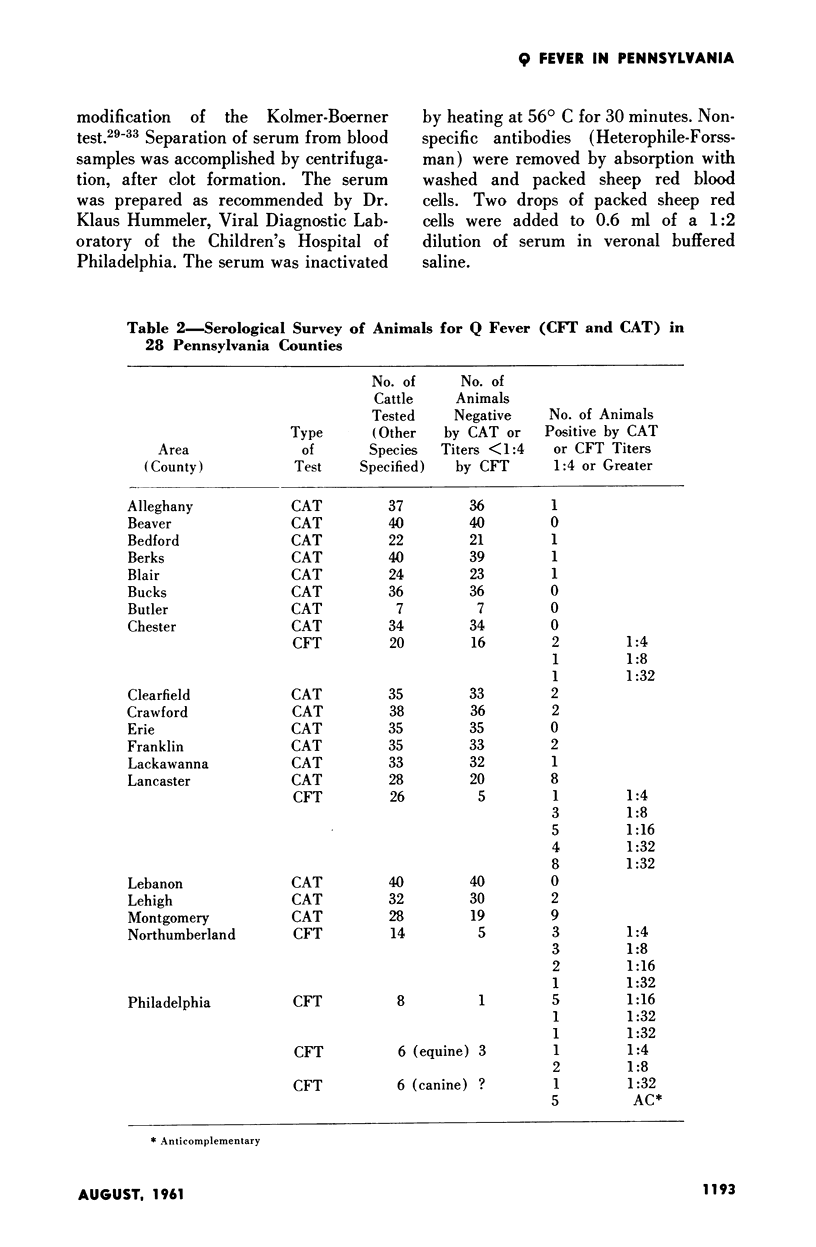
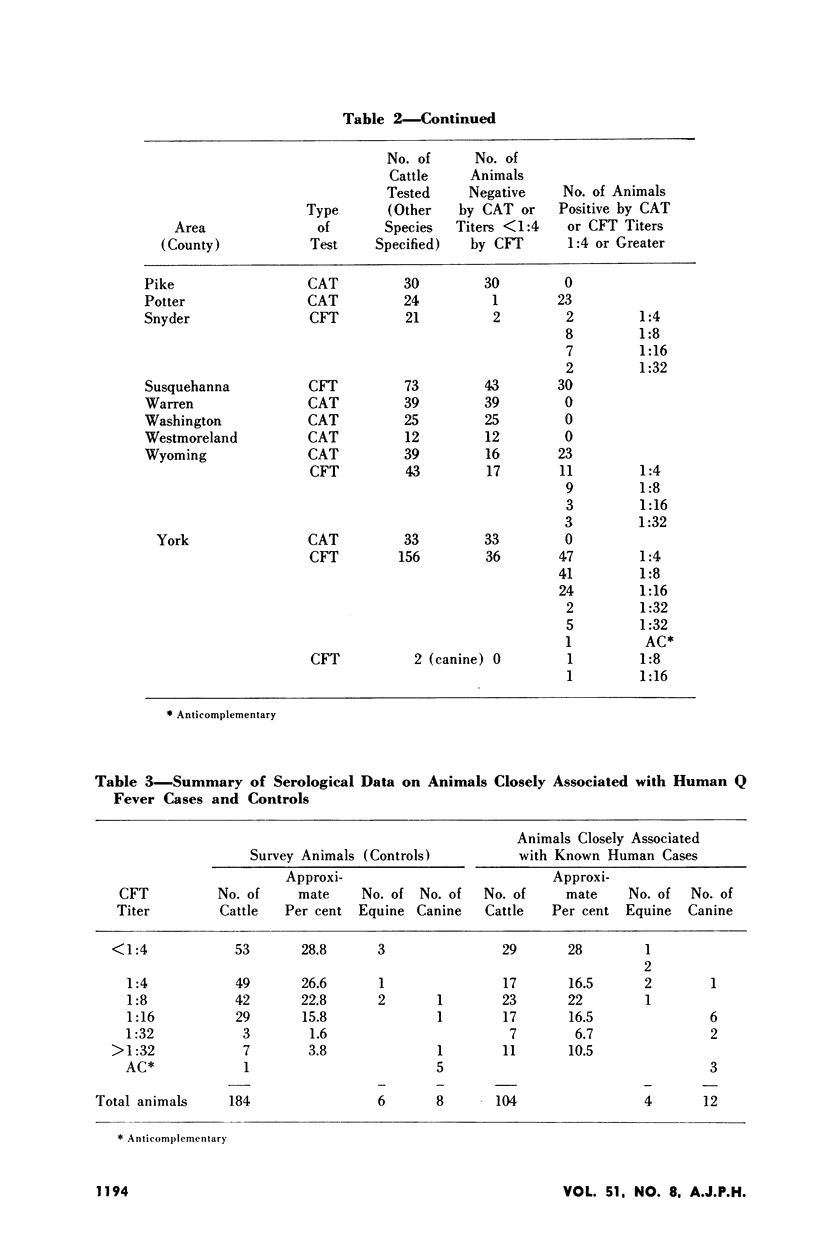
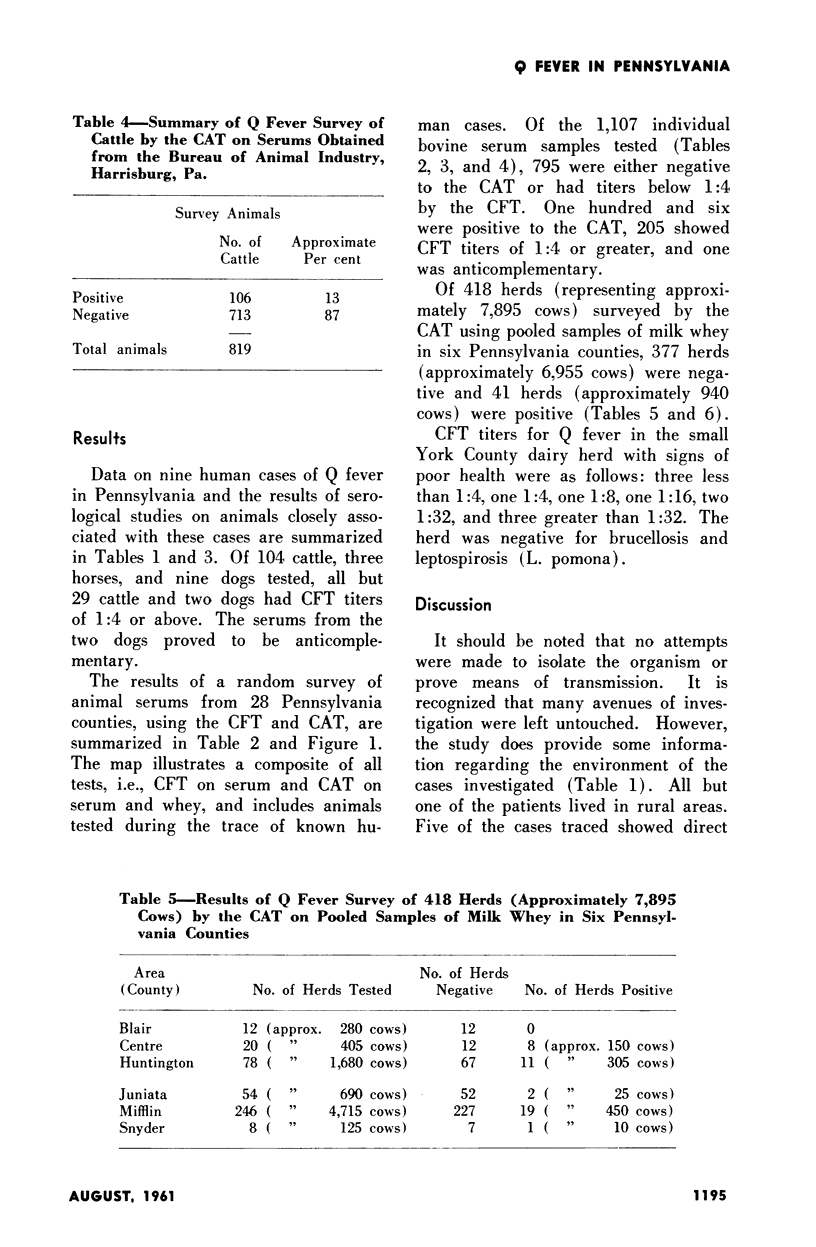
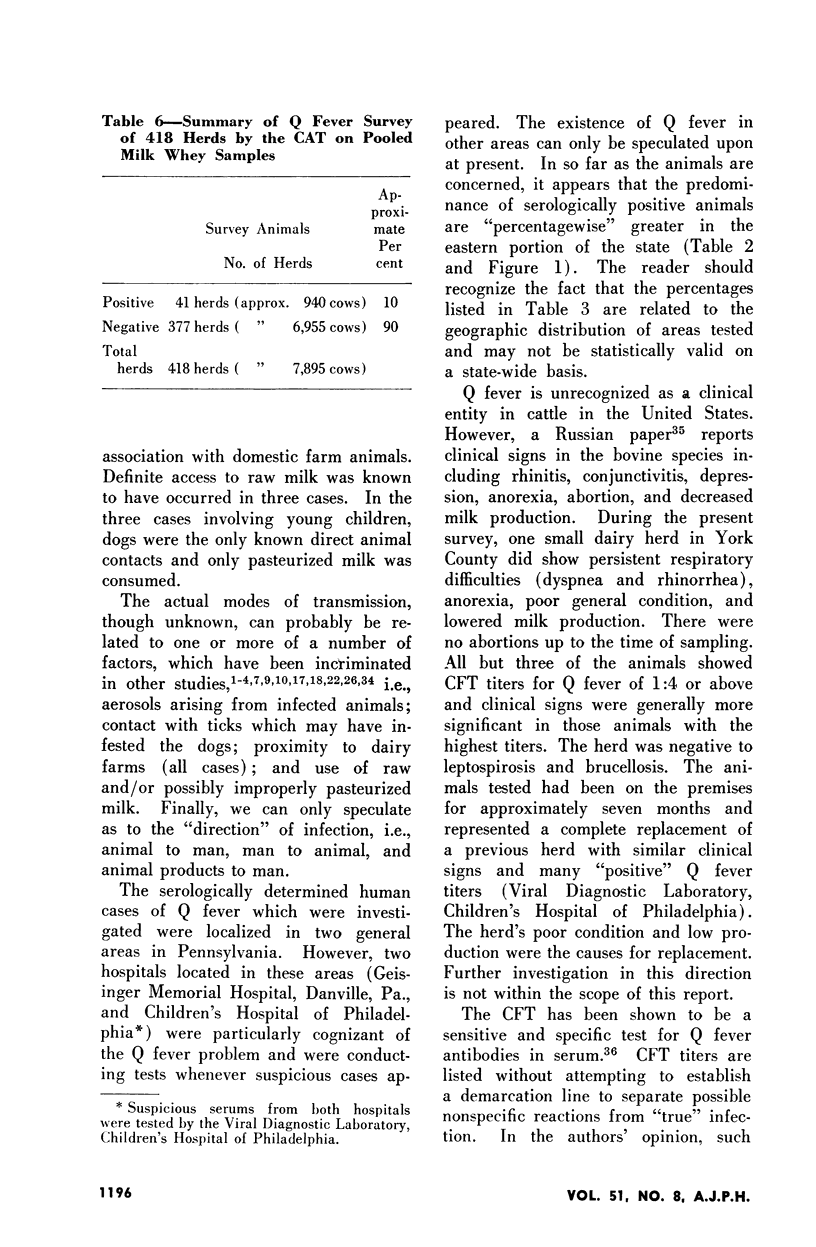
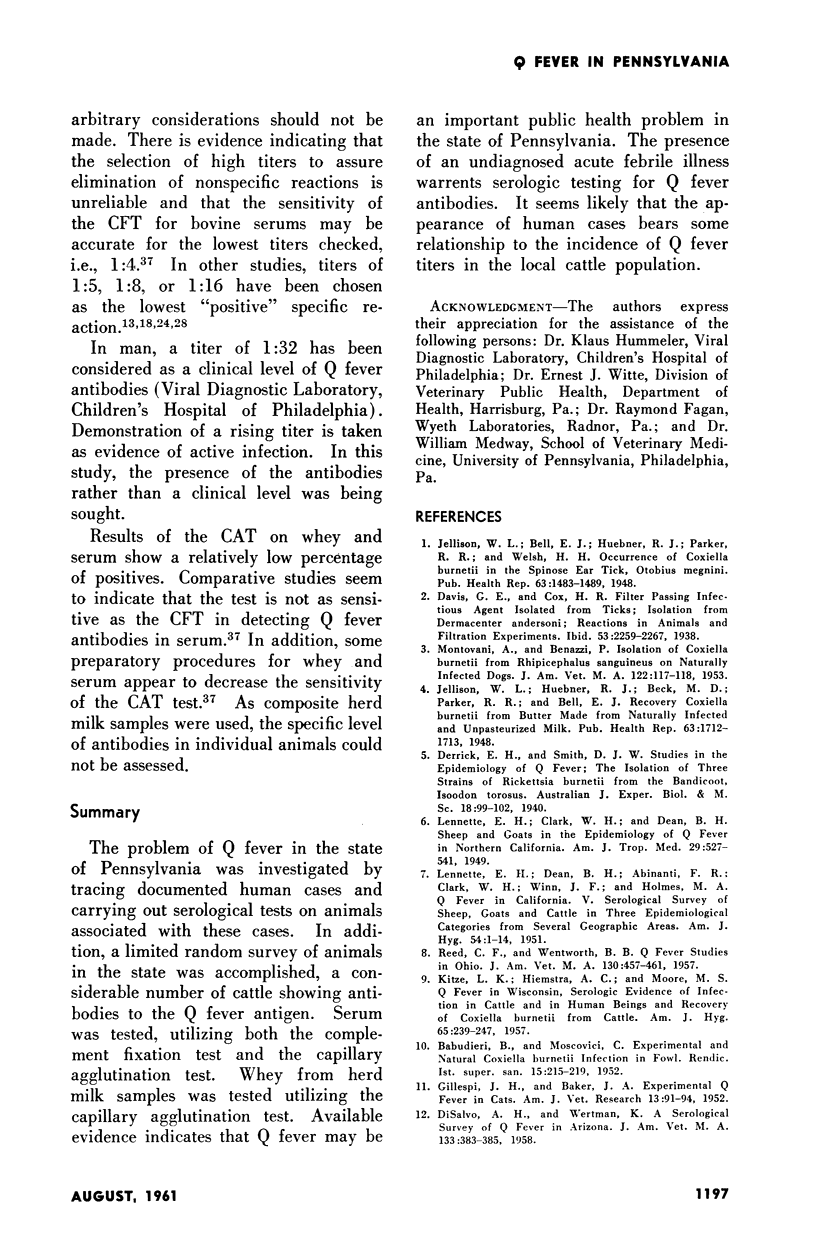
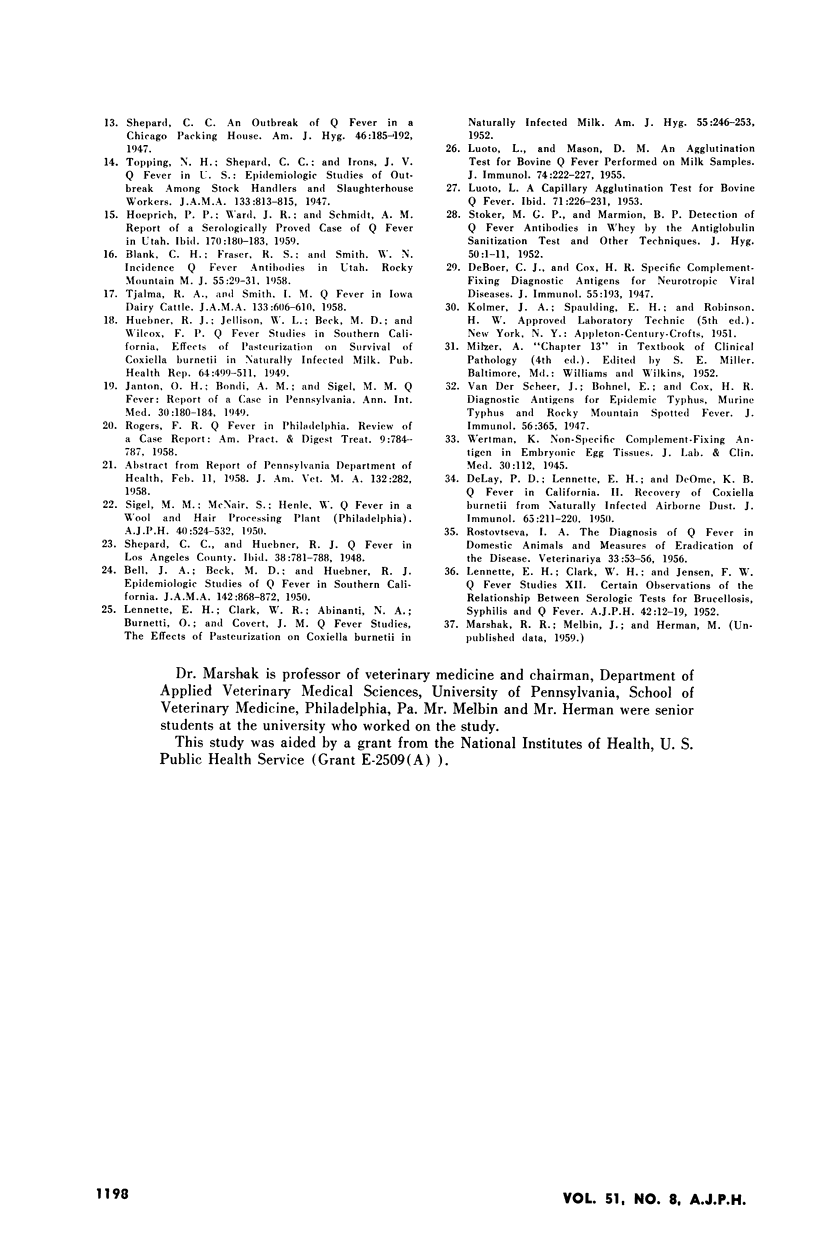
Selected References
These references are in PubMed. This may not be the complete list of references from this article.
- BELL J. A., BECK M. D., HUEBNER R. J. Epidemiologic studies of Q fever in southern California. J Am Med Assoc. 1950 Mar 25;142(12):868–872. doi: 10.1001/jama.1950.02910300006002. [DOI] [PubMed] [Google Scholar]
- DISALVO A. F., WERTMAN K. A serological survey of Q fever in Arizona. J Am Vet Med Assoc. 1958 Oct 1;133(7):383–385. [PubMed] [Google Scholar]
- GILLESPIE J. H., BAKER J. A. Experimental Q fever in cats. Am J Vet Res. 1952 Jan;13(46):91–94. [PubMed] [Google Scholar]
- HOEPRICH P. D., WARD J. R., SCHMIDT A. M. Report of a serologically proved case of Q fever in Utah. J Am Med Assoc. 1959 May 9;170(2):180–183. doi: 10.1001/jama.1959.03010020038012. [DOI] [PubMed] [Google Scholar]
- HUEBNER R. J., JELLISON W. L. Q fever studies in Southern California; effects of pasteurization on survival of C. burneti in naturally infected milk. Public Health Rep. 1949 Apr 22;64(16):499–511. [PMC free article] [PubMed] [Google Scholar]
- JELLISON W. L., BELL E. J. Q fever studies in southern California; occurrence of Coxiella burneti in the spinose ear tick, Otobius megnini. Public Health Rep. 1948 Nov 12;63(46):1483–1489. [PMC free article] [PubMed] [Google Scholar]
- KITZE L. K. Q fever in Wisconsin; serologic evidence of infection in cattle and in human beings and recovery of C. burneti from cattle. Am J Hyg. 1957 May;65(3):239–247. doi: 10.1093/oxfordjournals.aje.a119867. [DOI] [PubMed] [Google Scholar]
- LENNETTE E. H., CLARK W. H., ABINANTI M. M., BRUNETTI O., COVERT J. M. Q fever studies. XIII. The effect of pasteurization on Coxiella burneti in naturally infected milk. Am J Hyg. 1952 Mar;55(2):246–253. [PubMed] [Google Scholar]
- LENNETTE E. H., CLARK W. H., JENSEN F. W. Q fever studies. XII. Certain observations on the relationships between serologic tests for brucellosis; syphilis and Q fever. Am J Public Health Nations Health. 1952 Jan;42(1):12–19. doi: 10.2105/ajph.42.1.12. [DOI] [PMC free article] [PubMed] [Google Scholar]
- LENNETTE E. H., DEAN B. H., ABINANTI F. R., CLARK W. H., WINN J. F., HOLMES M. A. Q fever in California. V. Serologic survey of sheep, goats and cattle in three epidemiologic categories, from several geographic areas. Am J Hyg. 1951 Jul;54(1):1–14. [PubMed] [Google Scholar]
- LUOTO L. A capillary agglutination test for bovine Q fever. J Immunol. 1953 Oct;71(4):226–231. [PubMed] [Google Scholar]
- LUOTO L., MASON D. M. An agglutination test for bovine Q fever performed on milk samples. J Immunol. 1955 Mar;74(3):222–227. [PubMed] [Google Scholar]
- MANTOVANI A., BENAZZI P. The isolation of Coxiella burnetii from Rhipicephalus sanguineus on naturally infected dogs. J Am Vet Med Assoc. 1953 Feb;122(911):117–118. [PubMed] [Google Scholar]
- REED C. F., WENTWORTH B. B. Q fever studies in Ohio. J Am Vet Med Assoc. 1957 May 15;130(10):458–461. [PubMed] [Google Scholar]
- ROGERS F. B. Q fever in Philadelphia; review and case report. Am Pract Dig Treat. 1958 May;9(5):784–787. [PubMed] [Google Scholar]
- SHEPARD C. C., HUEBNER R. J. Q fever in Los Angeles County; description of some of its epidemiological features. Am J Public Health Nations Health. 1948 Jun;38(6):781–788. doi: 10.2105/ajph.38.6.781. [DOI] [PMC free article] [PubMed] [Google Scholar]
- STOKER M. G. P., MARMION B. P. Detection of Q fever antibodies in whey by the anti-globulin sensitization test and other techniques. J Hyg (Lond) 1952 Mar;50(1):1–11. doi: 10.1017/s0022172400019380. [DOI] [PMC free article] [PubMed] [Google Scholar]


